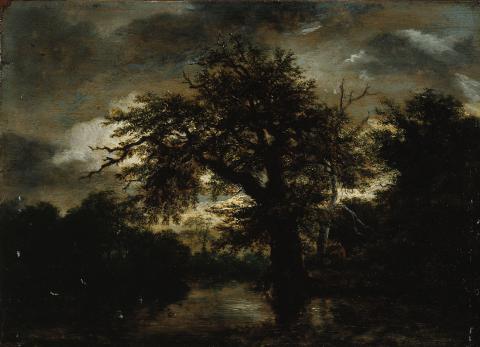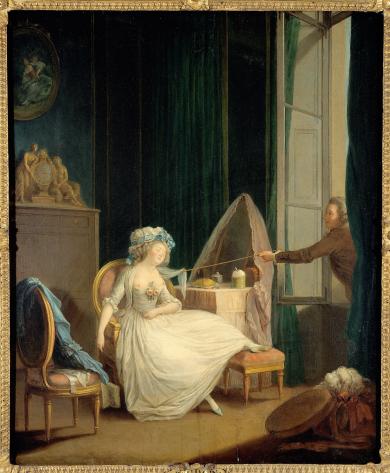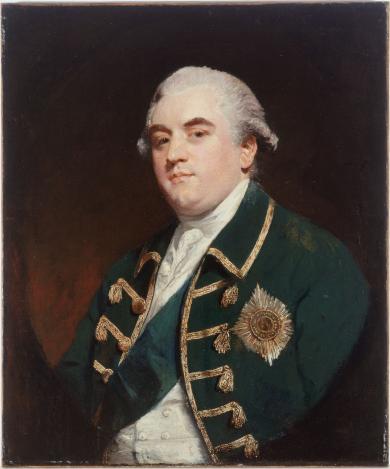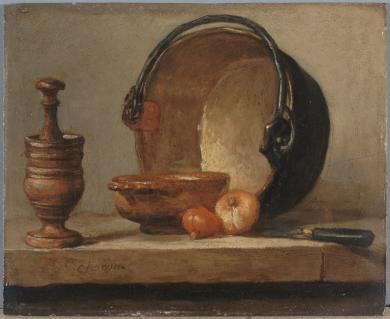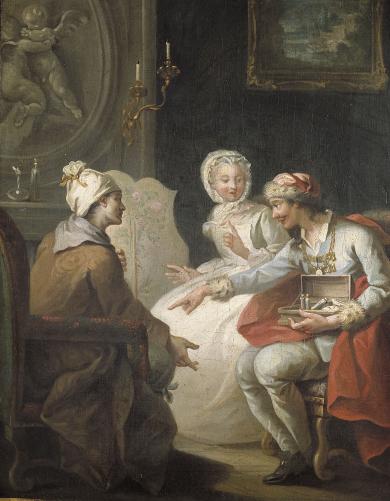The Great Oak is a rare twilight scene, a sort of unicum in Ruisdael’s work. Ruisdael, a Dutch Golden Age artist, who specialised in painting woodland landscapes, produced numerous works in which the subject of the tree occupies a large part of the composition. As a pretext for animation or simple pleasure, this subject allowed the artist to develop his talent for the veristic representation of foliage and thus succeed in portraying the imposing presence of the tree through his painting. It is unusual to find a lone tree in the artist’s work that emerges as a portrait of a tree. Here, this Vieux Chêne (Old, or Great Oak), a grandiose natural monument, spreads out wide branches with vibrant foliage over a pond with stagnant water, reflecting the evening light. The only signs of life are a few ducks resting on the water and the silhouette of an angler in a red jacket and large brown felt hat. We often find the small figure of a red-suited peasant, as an echo of human presence, an indication of size and scale, and a vibrant touch of colour, all at same time, in the paintings of Jacob Van Ruisdael. The painter uses a brilliant, almost metallic range of blues and greens, enhanced with white. He liked to analyse the effects of pale light on stagnant water, deliberately contrasting the dark masses of trees, the bluish and orange gleams of the setting sun and the mirror of the waters. This is an additional artifice to highlight the dominant figure of the oak. This powerful, suggestive representation of trees can be found in the works of his most famous pupil, Meindert Hobbema.
To go further
Browse the artwork in very high resolution
Download